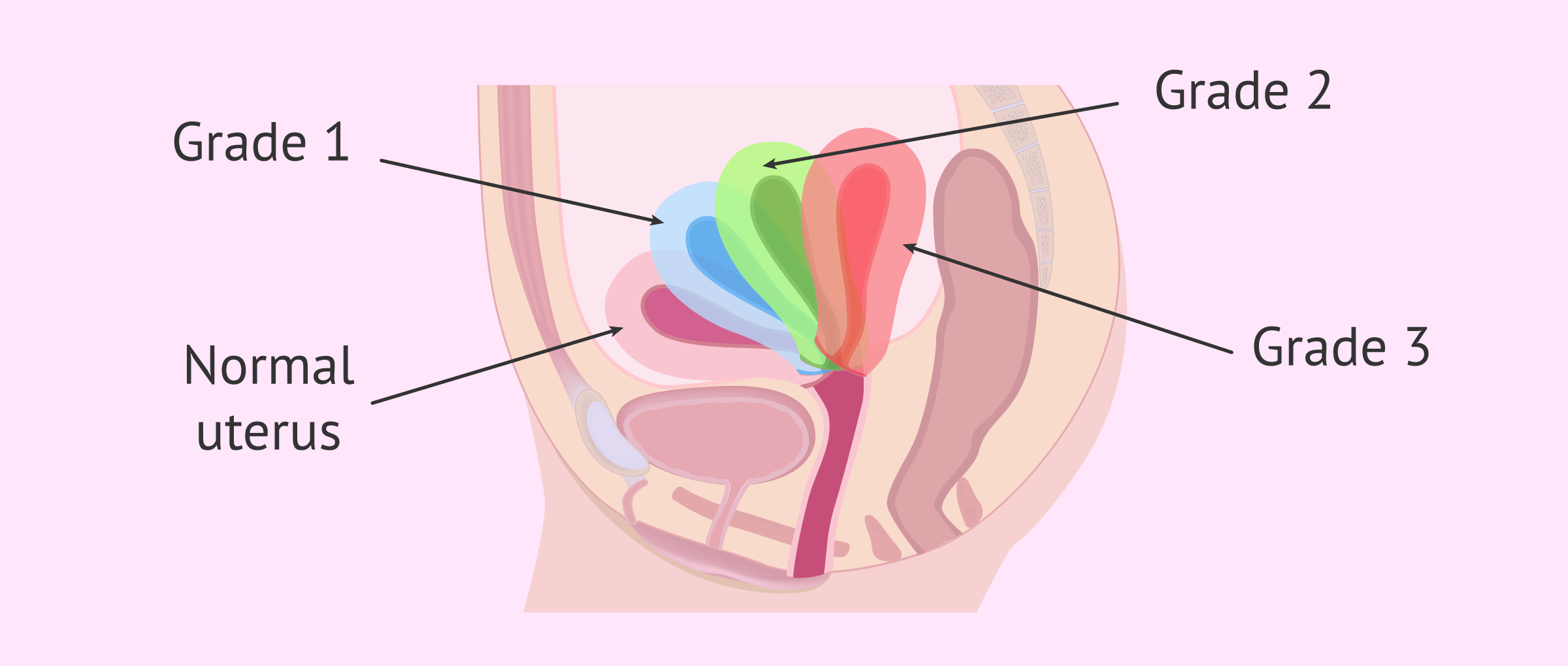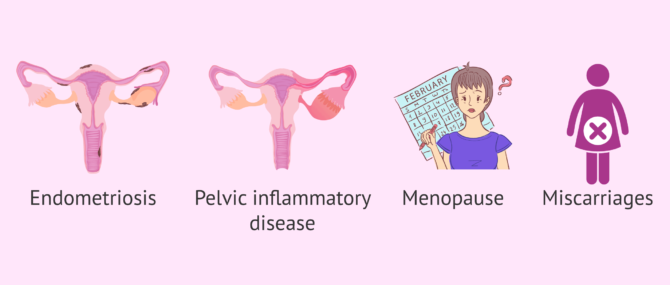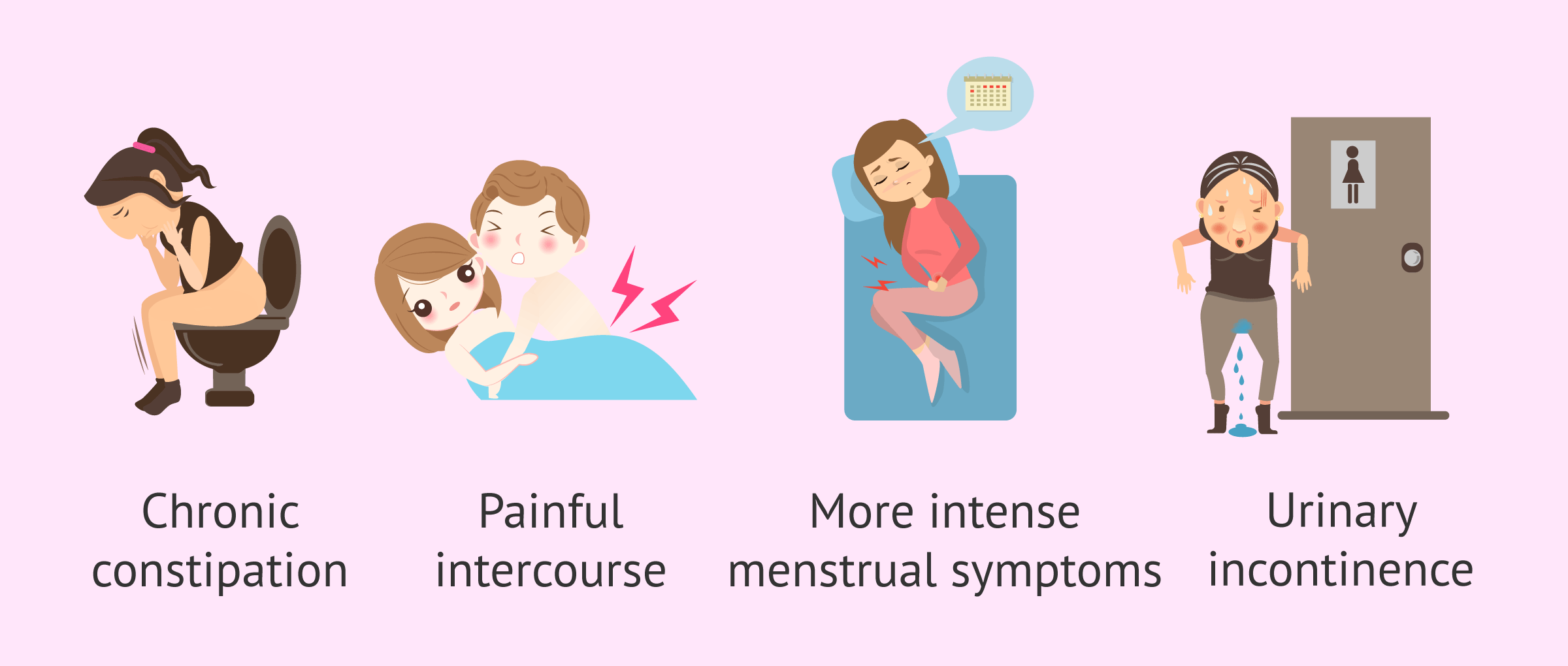The retroverted uterus is an anatomical variant of this organ that is present in 20-30% of women. The orientation of the uterus in the pelvic cavity is different from that of other women, who have an anteverted uterus.
The retroverted, tilted or tipped uterus points to the back rather than the front and is therefore considered a uterine abnormality. However, this is not serious and does not affect women's fertility.
The only drawback of the retroverted uterus is that it can cause discomfort for some women, such as pain during sex.
Provided below is an index with the 8 points we are going to expand on in this article.
- 1.
- 1.1.
- 2.
- 3.
- 4.
- 5.
- 5.1.
- 5.2.
- 5.3.
- 5.4.
- 5.5.
- 6.
- 7.
- 8.
Definition of retroverted uterus
Retroverted uterus, also called tilted or tipped uterus, consists of an alteration in the position and orientation of the uterus within the pelvis.
While the normal variant of the uterus (in anteversion) is tilted forward, the retroverted uterus points towards the vertical column and rests on the rectum.
In addition, the uterus may also be in retroversion: facing the back of the body and leaning over the rectum.
The diagnosis of an inverted uterus is made in the course of a routine gynecological examination, usually the first time a woman goes to this specialist.
During a pelvic examination, the retroverted uterus may be mistaken for a mass or growth of fibroids. Therefore, an ultrasound scan will be necessary to determine the exact position of the uterus.
Degrees of retroversion
Depending on the inclination of the uterus inside the pelvis, it is possible to differentiate 3 degrees of retroversion.
Considering that in the normal variant of the uterus, in anteversion, it leans forward and rests on the bladder, the degrees of retroversion that exist are as follows:
- Grade 1
- the uterus is not so tilted forward and no longer rests on the bladder.
- Grade 2
- the uterus is in an upright position, with the bottom of the sac facing upwards.
- Grade 3
- the uterus is completely tilted towards the rectum.
Why does this happen?
Retroverted uterus is a disorder that can be congenital or acquired.
In the first case, the uterus naturally takes this position during fetal development in the mother's womb. Therefore, the baby is already born with this uterine abnormality.
On the other hand, uterine retroversion may also be secondary. The causes of its appearance will be due to pathologies developed in the pelvis, such as the following:
- Inflammatory processes
- Endometriosis
- Pelvic inflammatory disease
- Tumors
- Pelvic surgeries
- Menopause
- Abortion
Sometimes uterine retroversion occurs during pregnancy, but after the first trimester the uterus returns to its normal position because of the weight of the fetus.
A transient retroversion may also occur in the postpartum stage, due to distension of the pelvic floor ligaments.
What are the symptoms of retroverted uterus?
In most cases, the retroverted uterus is asymptomatic. However, we can name some symptoms that have been seen to be related to this anomaly:
- Painful bowel movements due to pressure from the uterus on the rectum
- Chronic constipation for the same reason as above.
- Pain during sexual intercourse due to the collision of the penis with the cervix
- More intense menstrual symptoms.
- Urinary incontinence or urinary retention depending on the interference of the uterus with the bladder
Other discomforts that have been described in women with an inverted uterus, especially when there is another condition that causes it, are nervous coughing, irritability, stomach discomfort, headache, etc.
Pregnancy with retroverted uterus
Firstly, it should be noted that a woman's fertility is not affected just by the inclination of the uterus. However, associated factors that cause a retrograde uterus may have an implication, such as endometriosis.
Women who have retroverted uterus can easily become pregnant, as can any fertile woman, and their pregnancies develop without complications.
In women who have a retroverted uterus for an acquired cause, the uterus often corrects its position itself during pregnancy because of the weight of the fetus as it develops.
This accommodation of the uterus in the body takes place at the end of the first trimester of pregnancy and, thanks to this, the baby develops without problems.
If the gynecologist detects that the uterus has not settled into the right position during pregnancy, he will try to turn it by means of a digital vaginal manoeuvre.
If this abnormality is not detected and corrected in time, an abortion or cesarean delivery could occur due to the incorrect position of the uterus, but this is very rare, though.
FAQs from users
Are there any special considerations for IVF if I have a retroverted uterus?
The position of the uterus is important and should be taken into account by the specialist. However, there are no special considerations or additional problems in IVF related to the uterine position.
Read more
Can I have fertility problems if I have a retroverted uterus?
No, although this concept was discussed many years ago, the position of the uterus does not directly affect fertility.
It is true that sometimes the uterus leans backwards (retroverted uterus) as a result of pathologies that produce adhesions, such as endometriosis, or abdominal inflammatory processes. Since these pathologies are associated with a decrease in fertility, we must be attentive to them in these cases.
However, most retrogressive uteruses are not secondary to pathology, but a natural position that the uterus adopts spontaneously.
Is there any treatment for the retroverted uterus?
Treatment of this anatomical abnormality focuses on reducing menstrual pain with anti-inflammatory drugs or hormonal contraceptives. In some specific cases, surgery can be used to correct the position of the uterus and fix it in its correct position, but this is not common.
What are the positions for achieving pregnancy with a retroverted uterus?
In general, you should seek a position that does not cause discomfort to the woman during intercourse and, if you are seeking pregnancy, have sex on the fertile days.
On the other hand, some specialists recommend the genupectoral position and subsequent penetration to achieve a pregnancy with uterine retroversion. The explanation for this is that the deviation of the uterus is attenuated with this position and, in addition, it allows a greater opening of the cervix.
Finally, another piece of advice for these women seeking pregnancy is to keep their legs up for a few minutes after intercourse.
What problems does a retroverted uterus cause?
In principle, a retroverted uterus should not have any consequences for a woman's health. This uterine alteration does not usually cause serious symptoms in women.
However, some women describe pain in the lower back and/or constipation during menstruation. In addition, there is a greater tendency for the pelvic ligaments to weaken once menopause is reached.
Suggested for you
There are other congenital uterine disorders that have a greater implication in infertility. If you want to know them, you can read more here: What are müllerian duct anomalies? Classification with pictures.
If you want to learn more about the best sexual positions to achieve pregnancy, you can click on the following link: Sex positions to boost your chances of getting pregnant.
We make a great effort to provide you with the highest quality information.
🙏 Please share this article if you liked it. 💜💜 You help us continue!
References
Bultez T, Vincienne M, Noël C. Incarceration of the retroverted uterus in the third trimester: report of 2 cases. Gynecol Obstet Fertil. 2013 Jun;41(6):409-11. doi: 10.1016/j.gyobfe.2013.04.013.
Haylen B. The retroverted uterus: ignored to date but core to prolapse. Int Urogynecol J Pelvic Floor Dysfunct. 2006 Nov;17(6):555-8. doi: 10.1007/s00192-005-0051-0.
Jacobsson B, Wide-Swensson D. Incarceration of the retroverted gravid uterus--a review. Acta Obstet Gynecol Scand. 1999 Sep;78(8):665-8 (view)
Mayr N, Montebello J, Sorosky J, Daugherty J, Nguyen D, Mardirossian G, Z Wang J, M Edwards S, Li W, T C Yuh W. Brachytherapy management of the retroverted uterus using ultrasound-guided implant applicator placement. Brachytherapy. 2005;4(1):24-9. doi: 10.1016/j.brachy.2004.10.007 (view)
Menakaya U, Condous G. The retroverted uterus: refining the description of the real time dynamic 'sliding sign'. Australas J Ultrasound Med. 2013 Aug;16(3):97 (view)
Weekes AR, Atlay R D , Brown V A, Jordan E C, Murray S M. The retroverted gravid uterus and its effect on the outcome of pregnancy. Br Med J. 1976 Mar 13;1(6010):622-4. doi: 10.1136/bmj.1.6010.622 (view)
Zhang W, He M, Huang G, He J. A comparison of ultrasound-guided high intensity focused ultrasound for the treatment of uterine fibroids in patients with an anteverted uterus and a retroverted uterus. Int J Hyperthermia. 2016 Sep;32(6):623-9 (view)
FAQs from users: 'Are there any special considerations for IVF if I have a retroverted uterus?', 'Can I have fertility problems if I have a retroverted uterus?', 'Is there any treatment for the retroverted uterus?', 'What are the positions for achieving pregnancy with a retroverted uterus?' and 'What problems does a retroverted uterus cause?'.










